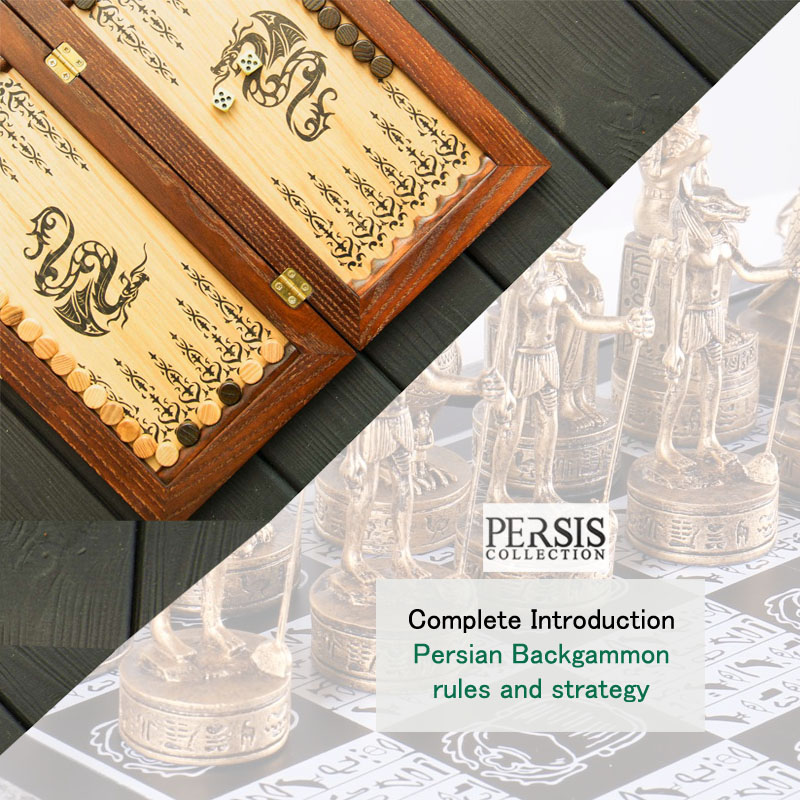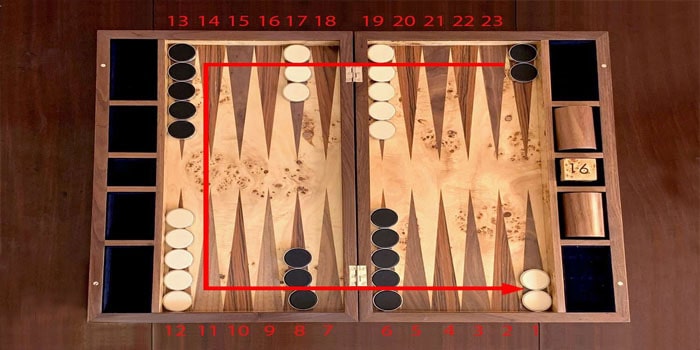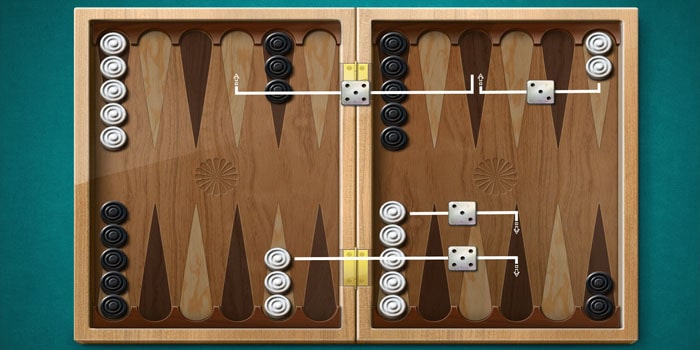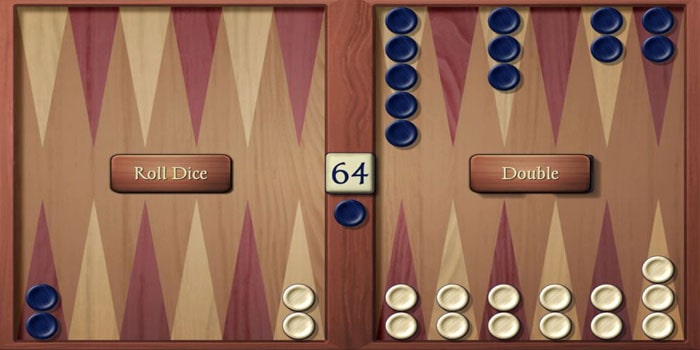Persian Backgammon rules and strategy

Today, we’re going to share the best Persian backgammon tips and strategies to help you become a professional player. Before we begin, keep in mind that winning at backgammon requires both luck and skill. In short games, even an average player can beat an expert—provided they roll the dice well. But in longer matches, skilled players have a clear advantage.
While many people think it takes years to become a professional backgammon player, you can actually reach a high level by learning and applying a set of simple yet powerful strategies. If you love backgammon and want to improve your game, this guide will be an excellent place to start.
You might also enjoy: Persian backgammon

Persian Backgammon rules and strategy
Backgammon basics
Let’s start with the opening moves of the backgammon board. There are dozens of different moves to start backgammon; But in total, rolling two dice together produces only 15 combinations. To start the game, each player must roll a dice. Whoever rolls more dice will start the game. In this case, it is impossible to use both dice.
You might get a little confused because of the variety of backgammon moves or because of the different numbers. Fortunately, we have explained the different combinations of dice here, and you no longer have to find the correct moves to start the game by trial and error.
The best backgammon moves are those that secure a point with two or more checkers for you and bring you closer to your opponent’s checkers. By doing this, you assign that point to yourself and prevent the opponent’s checkers (15 pieces on each player’s side). Securing different points while moving on each of the two main backgammon boards is one of the powerful strategies of this game.
A Guide to the Best Starting Strategies
If you throw 5-3, 6-1, 4-2, and 3-1 dice, you can start the first moves of the game. For 3-5 dice moves 3/8 7/13 is recommended. All backgammon experts agree that the best starting move for a 6-1 dice is 7/8 7/13. If you roll 4-2 dice, we recommend moving with 5/8 5/6.
If you cannot secure a point, the best thing to do is to separate two checkers that secure the same point. Although this can open up at least two points for attack, you can easily secure one point next hand. Here we examine the best moves for splitting or separating the two checkers of a point.
The first one is 6-3 for the dice. If you roll such a dice, your move should be 10/13 18/24. If it was 2-6, you should move with 11/11 or 18/24. The initial 5-1 dice will have a move of 8/13 23/24. Recommended move for 1-4 dice is 13/9 23/24. For 2-1 dice it should move 11/13 23/24.
When you roll 4-5 dice, we recommend moving 24/8/13, but if you roll a 5-2, you should move 24/22/8/13. Our recommended move for the dice is 4-3 9/13 21/24. If you roll 2-3 dice, you must move 11/13 21/24.
The easiest moves to start a backgammon game are two moves. The first one is for when you roll 6-4 dice. The starting move for such a dice is 14/24, but you can use 18/24 9/13 as an alternative move. The second move, i.e., 6-5 dice, is played with 24/13 moves. You need time to memorize all these things, but don’t worry, after a few times of practice, you will be able to remember the right move when rolling the dice.

Backgammon basics
Running game
Moving checkers is the simplest backgammon strategy. To do this, simply rotate your checkers around the board. You can use this strategy when the game is easy and comfortable. Just focus on moving the checkers and securing all the points and don’t hit your opponent.
Try not to leave any of the opponent’s points empty and focus on hitting the opponent’s checkers. If you roll the dice well, you will likely be able to hit your opponent’s checkers earlier than your opponent.
Blocking and priming
Try to get the front row of the opponent’s section as much as you can. This makes it difficult for the opponent to escape. To block your opponent’s way, it is recommended to set your points in the order of importance 5, 4, and 7; This means that it is better to secure point 5 first, then 4 or 7.
When you get six points in a row (full prime), you have reached the most powerful position on the backgammon board, and as long as you maintain the dominance, the opponent cannot escape from your grasp.

Blocking and priming
The Blitz
An overwhelming all-out attack in backgammon is actually an aggressive attack that is done on the opponent’s vulnerable checkers. The strategy of this attack is that instead of securing the points, focus on moving the opponent’s checkers to the “bar” at every opportunity.
This not only forces your opponent to move back a few pips, but even if they fail to roll the necessary dice to stay on the board, you can push their checkers to the bar.
Remember that attacks close to your home rows will not hit the opponent’s checkers, but you may even be exposed to damage and lose a lot of pips if the opponent’s checkers remain.
Another point that you must remember is to arrange the checkers effectively in such a way that the opponent’s checkers are blocked. Using this strategy along with the blitz attack will cause a two-sided attack on the opponent and increase your chances of hitting and eating the opponent’s checkers.
In fact, the blitz pulls the opponent’s checkers towards the load, and blocking the opponent’s checkers prevents them from leaving the bar, and as a result, many of the opponent’s dice are wasted.










Comments